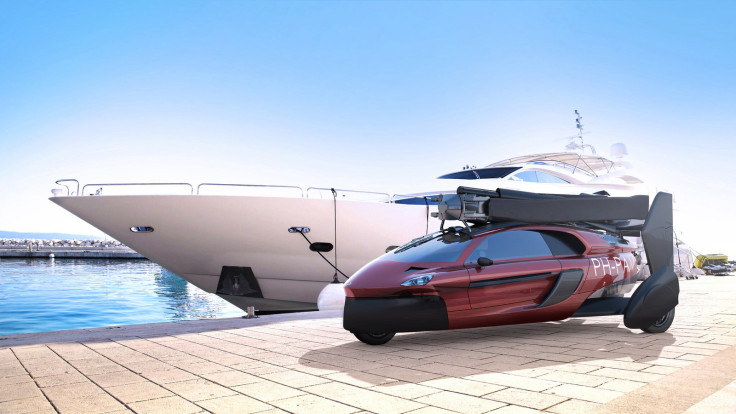PAL-V 'first flying car' to go into production this October with first customers in 2018
Is it a bird? Is it a plane? No, its a flying car.

In between planes and drones, the skies may be about to get a little bit busier.
This month, PAL-V, the creators of what is described as world's first "commercially feasible" flying car, opened a new production facility in the Netherlands and claimed early orders of the two-seater personal air and land vehicle will be shipped to global customers as soon as next year.
Production, the firm claimed, will be commencing "imminently" with final assembly on the PAL-V currently scheduled to start in October 2017.
"Most parts are ordered for the first machines and the first are in house, we will commence construction with an eye on deliveries to our first global clients in 2018 in to 2019," asserted PAL-V chief executive Robert Dingemanse in an update to press.
Using two 100-horsepower engines and unleaded fuel, the vehicle will reportedly be able to fly up to 310 miles (400 to 500 kilometres) at an altitude of up to 11,500 feet (3,500m), the firm has said.
While on the road, the vehicle will have a top speed of roughly 100mph an hour, the company told AFP, adding it expects to produce between 50 and 100 vehicles during its initial run.
This may increase to "quite a few hundred" by 2020, it added.
Owners of the flying car will need both a driving license and pilot's licence to operate it legally. The package, unsurprisingly, comes at a cost. The PAL-V Liberty is billed at a hefty £436,400 (€499,000, $599,000), while the PAL-V Liberty Sport will come in at £261,500 (€299,000, $334,770).
The company has stressed to obtain the relevant licence a pilot will have to undergo up to 40 hours of training with a gyroplane instructor and pass a set of exams. And while you may dream of going from land to air in one swoop, the vehicle requires a fairly lengthy airstrip for takeoff.
In a statement on 16 June, the PAL-V said it had met with the European Aviation Safety Agency (EASA), which manages flying certifications, to discuss progress of the project. Once built, the EASA will have to put the vehicle through extensive safety testing to ensure it's legal.
Release timescales on a global scale remain murky, however one PAL-V spokesperson told IBTimes UK last year it would be delivering its flying car to customers in Europe "soon". While the first vehicles went on sale earlier this year, it remains unclear how many have been bought so far.
"Naturally we are very excited about this on our side of the Atlantic," said Mark Jennings-Bates, vice president of sales of PAL-V in North America. "Our clients have put a lot of faith in our ability to execute our plan and deliver the first flying car into the North American market."
The firm stressed the PAL-V is a gyroplane, not a helicopter, as the blades rotate thanks to airflow - not powered with an engine. "Even if you go at zero speed it still keeps rotating and you are not going to drop out of the sky," marketing chief Markus Hess told AFP.
The market for flying cars is quickly becoming crowded, with other offerings including the GyroDrive and AeroMobi. "When the first airplane was invented people already thought 'How can I make that driveable on the road?" Hess said. "In some senses, we are selling a dream."
© Copyright IBTimes 2025. All rights reserved.






















